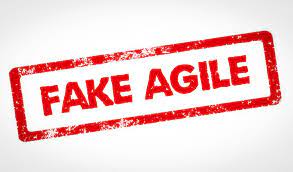
Some organizations are adopting agile and Scrum approaches simply because they see competitors doing it. In these situations, there is rarely a desire to adopt a new mindset and culture, or motivation for true change.
A common pattern is the adoption of a new nomenclature. Project Managers are renamed as Scrum Masters. Business Analysts become Product Owners.
Very little actually changes. Few benefits of agility are realized.
If anything, the situation may become worse as some previous structures are lost, yet the discipline for Agile is just not there.
